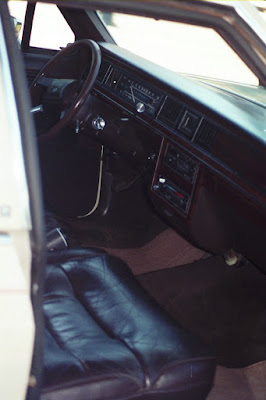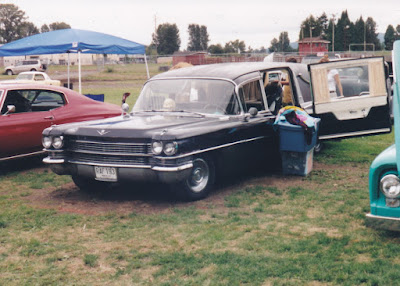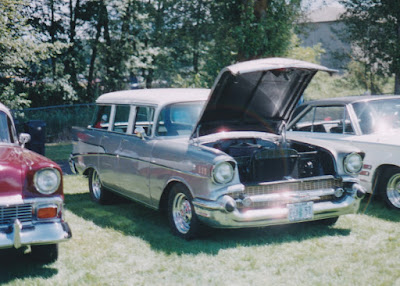My parents purchased this 1985 Ford LTD Crown Victoria Wagon in Sand Beige with a Clove Brown interior from Columbia Ford in Longview Washington, on August 19, 1992, with 72,577 miles on the odometer for $3,999.00, trading in their 1985 Mercury Marquis for $1,500.00.
It is powered by a standard 140-horsepower electronically fuel-injected 5.0-liter V8 engine producing 250 ft-lbs of torque with Electronic Engine Control IV and a 4-speed Automatic Overdrive Transmission.
Just 4 inches longer than the sedans, LTD Crown Victoria Wagons feature 89.5 cubic feet of cargo area with the rear seats folded down, plus a 2 cubic foot lockable side storage compartment, and another lockable storage compartment under the rear load floor that measures 9.9 cubic feet in a car without the dual facing rear seats like this one.
The LTD Crown Victoria Wagon also features a 3-way doorgate, which opens like a door with its power window up or down, or lowers like a tailgate.
Standard equipment included power steering, power front disc & rear drum brakes, concealed windshield wipers with fluidic washer system, power ventilation system, conventional spare tire, Super Luxury sound insulation, quad rectangular halogen headlamps, front and rear bumper guards, left-hand remote-control mirror, vinyl insert bodyside moldings, bright wheelslip moldings, rocker panel moldings, hood & bodyside accent stripes, courtesy lights in glove box, front ashtray & cargo area, day/night rearview mirror, fold-down rear seat, and removable color-keyed load floor carpet.
New for 1985 were a redesigned dashboard and steering wheel and gas-pressurized shock absorbers.
This well-equipped example also features an electronic AM/FM stereo search radio with cassette tape player including Dolby® Noise Reduction, auto-reverse and program search features, leather-wrapped steering wheel, air conditioning, pivoting vent front windows, rear window defroster, Tripminder® computer, cornering lamps, illuminated entry system, speed control, tilt steering wheel, right-hand remote convex mirror, interval windshield wipers, deluxe luggage rack, heavy-duty trailer towing package, 6-way power driver seat adjustment, bumper rub strips, cast aluminum wheels, power side windows, the Power Lock Group with power door locks and doorgate lock, the Interior Luxury Group including reclining split bench seats with seat back map pockets, optional leather upholstery with special sew style, luxury door panels with assist straps, full length armrest and power side window controls, 18-ounce cut-pile floor carpeting, additional woodtone appliques on instrument panel, electronic digital clock, trip odometer, low oil level and low fuel warning lights, dual illuminated visor mirrors, automatic parking brake, and the Light Group including dual beam map light, headlamps-on warning chime, engine compartment light, and dual instrument panel courtesy lights.
Video by Cliff West


































